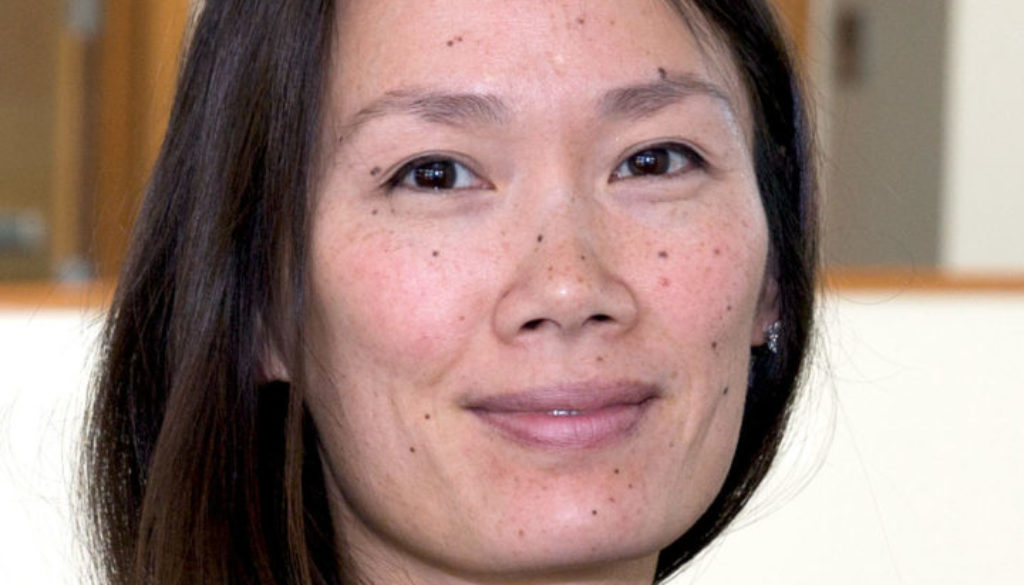Q&A with Texas A&M Astronomer Kim-Vy Tran
Texas A&M University astronomer Kim-Vy Tran is one of four researchers featured in the Giant Magellan Telescope’s Google+ month-long March series highlighting some of the women working on the Giant Magellan Telescope, from what sparked their interest in science to what inspires them today.
A member of the Texas A&M Department of Physics and Astronomy faculty and the George P. and Cynthia Woods Mitchell Institute for Fundamental Physics and Astronomy since 2009, Tran holds bachelor’s of science degrees in both physics and astronomy (with honors) from the University of Arizona as well as both a master’s and a doctorate in astronomy and astrophysics from the University of California Santa Cruz.
The following is an excerpt of Tran’s STEM story, viewable along with the complete series at https://plus.google.com/s/MeetGMTO:
How old were you when you first looked through a telescope, and what was your impression of what you saw?
“I remember visiting my aunt and uncle in Toronto, and my uncle has a telescope that he loved to use. I was still in elementary school, but was already amazed at the fuzzy images of planets that I could see through the telescope. I think I could even see some of Jupiter’s moons.”
How old were you when you decided that you wanted to pursue a career in a STEM field?
“About 18 — I planned on being an English/writing major when I went to university! My first astronomy class changed that.”
Within your field, what area fascinates you most? Least?
“I am most interested in understanding how galaxies assemble their stars, and this means going to the very distant universe when most galaxies were still forming. Since I was a graduate student, I’ve always pushed the frontier of studying galaxies with the thrill of knowing that I am the first person to see these systems. I love getting new observations, because I always discover something new! I am least interested in studying something that we already know.”
What has been your most rewarding success or accomplishment, as well as your biggest hurdle thus far in your career?
“Balancing my professional and personal life such that I can work on exciting science projects and still have time to enjoy my non-science interests. I also hope that I am a positive role model for both women and men in terms of being professionally successful while maintaining a positive work/life balance.
“As for biggest hurdle, making sure that my husband [Texas A&M physicist Helmut Katzgraber] and I are both professionally and personally happy. We are both academics, and we got married in grad school, so we always faced the issue of two positions in the same city. We worked very hard (and still do) and had some lucky opportunities. We are proud of our successful careers and are now both tenured faculty at Texas A&M University. We are also very aware that not every couple is so fortunate, and I personally am working to change this. For example, I advocate dual hiring and work/life balance programs.”
What was your initial impression of GMTO and why did you get involved?
“I study distant galaxies that are very faint and small; thus, I rely on the most powerful telescopes on the ground and in space. The Giant Magellan Telescope will change how we see the universe, and any astronomer worth their salt would be eager to join such an exciting project. The GMT is one of the main reasons why I decided to move from the University of Zurich to join Texas A&M University.”
# # # # # # # # # #
Now in its 17th year, Student Research Week is a friendly competition that highlights both undergraduate and graduate research at Texas A&M, one of the country’s top research universities. The weeklong celebration fosters an environment for students, faculty and administrators to learn about student research at Texas A&M, but also gives students an opportunity to win numerous awards and cash prizes.
For more information about research in the College of Science, go to https://science.tamu.edu/research/.
-aTm-
Contact: Shana K. Hutchins, (979) 862-1237 or shutchins@science.tamu.edu or Dr. Kim-Vy Tran, (979) 458-5853 or vy@physics.tamu.edu
The post Q&A with Texas A&M Astronomer Kim-Vy Tran appeared first on Texas A&M College of Science
